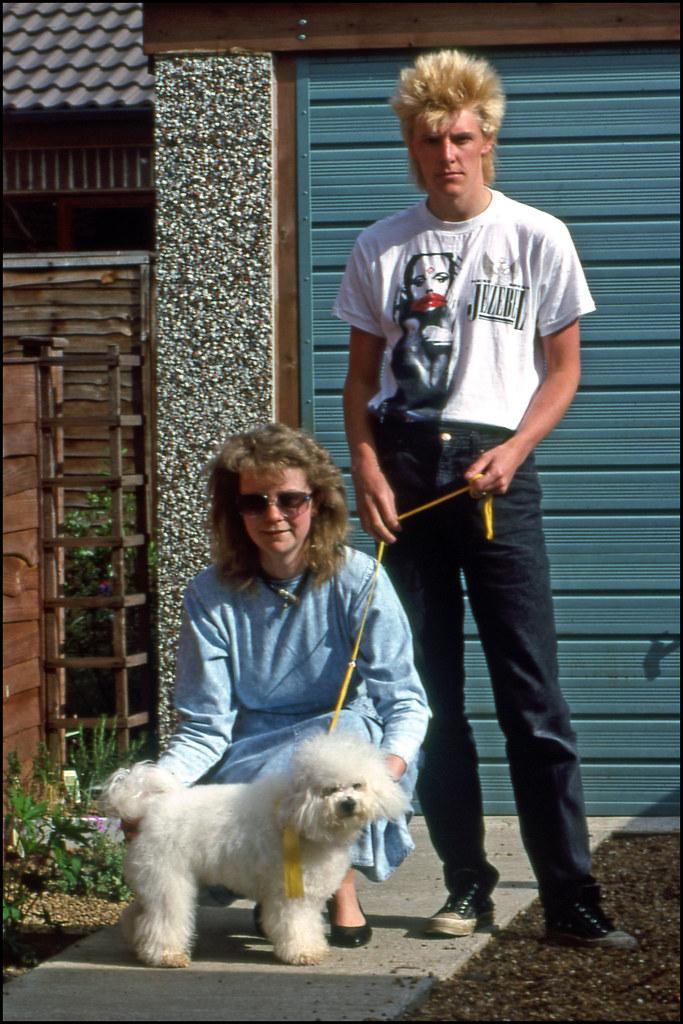Grooming is often seen as a routine task in the life of a dog owner, a necessary chore to keep our furry friends clean and looking their best. However, beyond the glossy coats and trimmed nails lies a deeper connection between grooming and canine behavior that many pet owners might overlook. This article delves into the intriguing relationship between grooming practices and their impact on dog behavior. With a warm and instructive approach, we aim to guide you through understanding how regular grooming not only contributes to your pet’s physical health but also plays a crucial role in their emotional well-being. Whether you’re a seasoned pet owner or a new dog parent, join us as we explore how the simple act of grooming can influence your dog’s mood, behavior, and overall quality of life.
Understanding the Connection Between Grooming and Dog Behavior
In exploring the intricate relationship between a well-groomed coat and canine demeanor, it’s fascinating to see how grooming extends beyond mere aesthetics. Regular grooming sessions can significantly influence a dog’s emotional and psychological state. Dogs often find comfort in routine, and grooming establishes a consistent ritual that many pets find soothing. The process of brushing, bathing, and trimming can mimic the natural bonding activities dogs experience with their mothers or pack members. This sense of connection can enhance their feelings of security and trust, leading to more balanced and confident behavior.
Moreover, grooming plays a crucial role in health maintenance, directly impacting behavior. Consider the following ways grooming can positively affect your dog’s demeanor:
- Early Detection of Health Issues: Regular grooming allows you to check for any abnormalities such as lumps, parasites, or skin irritations, which can cause discomfort and lead to behavioral changes.
- Physical Comfort: A clean, mat-free coat ensures that your dog feels comfortable, reducing irritability and anxiety.
- Positive Reinforcement: Using treats and praise during grooming sessions can reinforce good behavior, making your dog more cooperative and happier.
By incorporating regular grooming into your dog’s routine, you not only keep them looking their best but also contribute to their overall well-being and happiness.
Insights into How Regular Grooming Influences Canine Temperament
Regular grooming sessions are more than just an opportunity to maintain your dog’s appearance; they play a crucial role in shaping their behavior and emotional well-being. Routine grooming can help foster a sense of security and trust between you and your furry friend, as it involves close physical contact and gentle handling. This intimate interaction can help reduce anxiety and stress, making your dog feel more comfortable in various situations.
- Enhanced Bonding: Grooming sessions provide quality time, strengthening the bond between you and your pet.
- Desensitization: Regular exposure to grooming tools and techniques can make your dog more adaptable and less reactive to new experiences.
- Improved Mood: A clean and comfortable dog is often a happier dog, with fewer reasons to display negative behaviors.
Moreover, dogs that are groomed regularly are often more receptive to handling by strangers, such as veterinarians or groomers, due to their familiarity with being touched and managed. This can lead to a more sociable and well-adjusted pet, contributing to a harmonious household and enjoyable outings.
Practical Grooming Tips for Enhancing Your Dogs Well-being
Grooming is more than just a routine; it’s a bonding experience that significantly influences your dog’s behavior and overall well-being. Regular grooming sessions help in building trust and reducing anxiety, as your dog becomes accustomed to being handled and cared for. To make the grooming process enjoyable for your furry friend, consider these practical tips:
- Establish a Routine: Dogs thrive on routine. Set aside a specific time each week for grooming, ensuring it’s a calm and stress-free environment.
- Use the Right Tools: Invest in high-quality brushes, combs, and shampoos suitable for your dog’s coat type. This not only makes the process smoother but also ensures your dog’s skin and coat remain healthy.
- Positive Reinforcement: Reward your dog with treats and praise during and after grooming. This creates a positive association, making future sessions more pleasant.
- Check for Health Issues: Regular grooming is an excellent opportunity to check for any unusual lumps, bumps, or parasites. Early detection can prevent more serious health issues.
By incorporating these tips into your grooming routine, you not only enhance your dog’s physical appearance but also contribute positively to their mental and emotional health, leading to a happier and more balanced pet.
Creating a Positive Grooming Experience for Your Furry Friend
Ensuring your dog enjoys their grooming sessions is crucial for their well-being and behavior. Start by creating a calm and inviting environment where your furry friend feels safe and relaxed. Consider the following tips to enhance their grooming experience:
- Introduce Grooming Tools Gradually: Let your dog sniff and explore the brushes, clippers, and other tools before you start using them.
- Use Positive Reinforcement: Offer treats and praise throughout the process to create positive associations with grooming.
- Keep Sessions Short and Sweet: Begin with brief sessions and gradually increase the duration as your dog becomes more comfortable.
By approaching grooming with patience and positivity, you can transform it into a bonding experience rather than a chore. This not only keeps your pet looking and feeling their best but also contributes to their overall happiness and balanced behavior.

